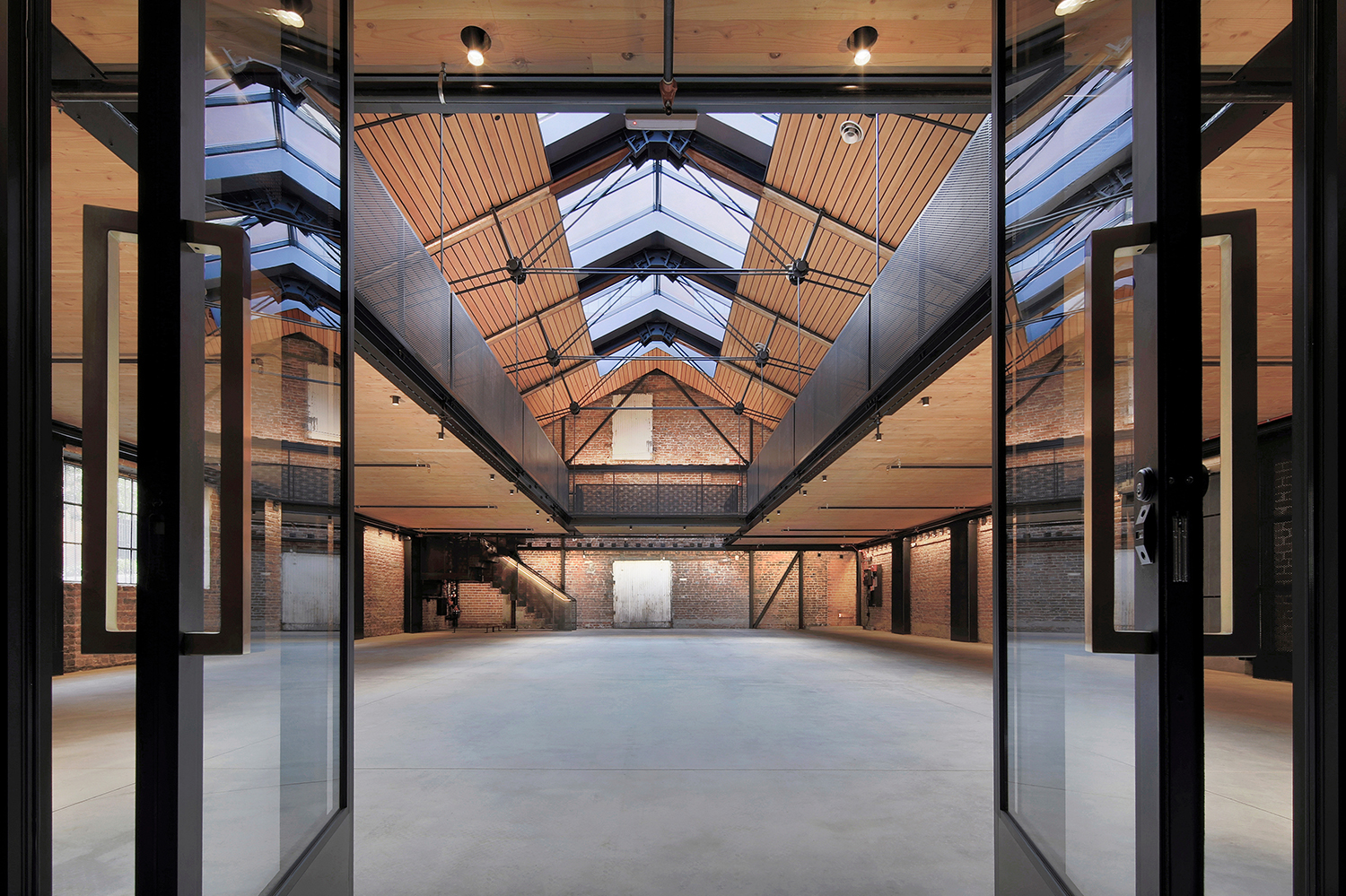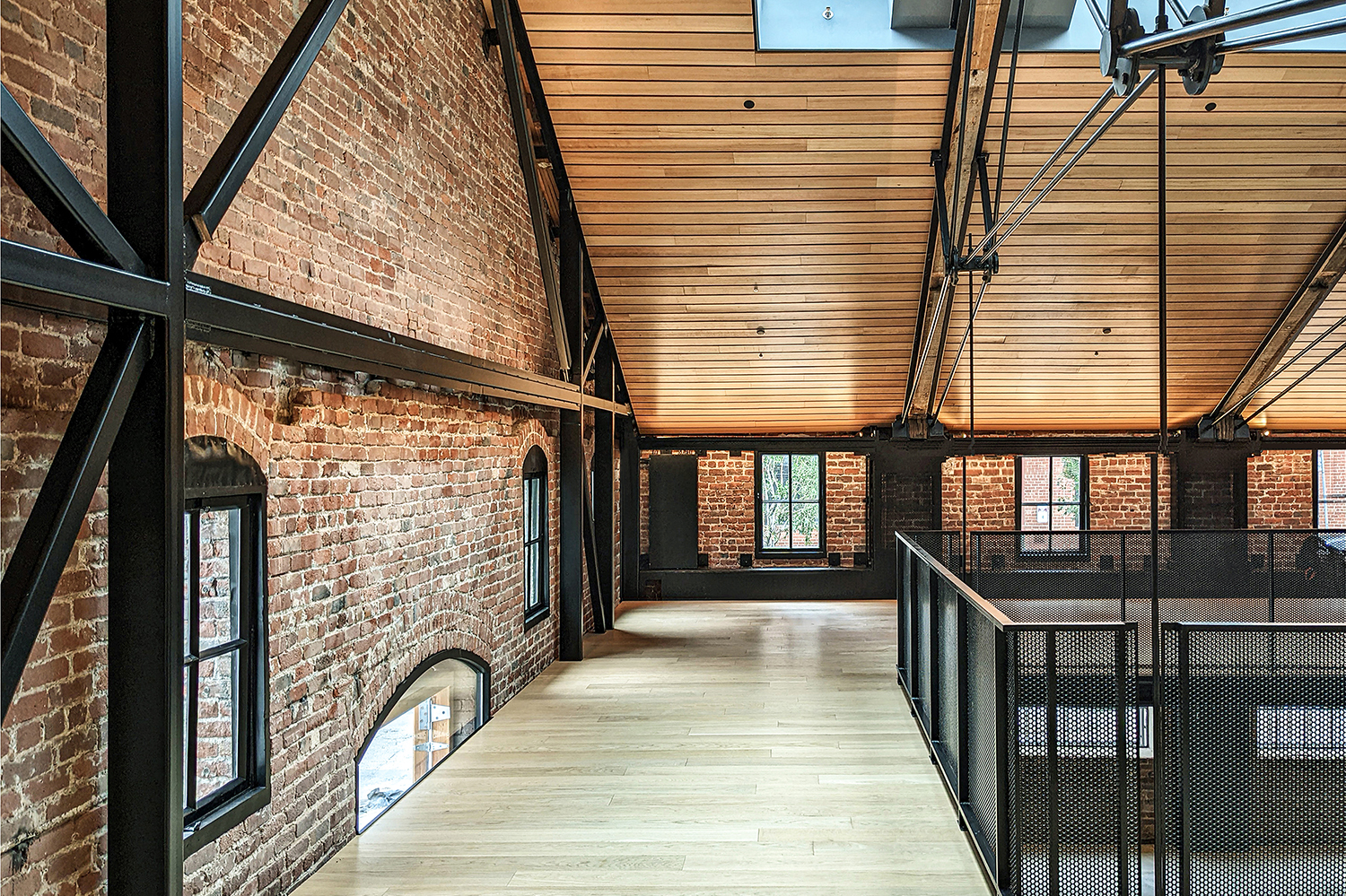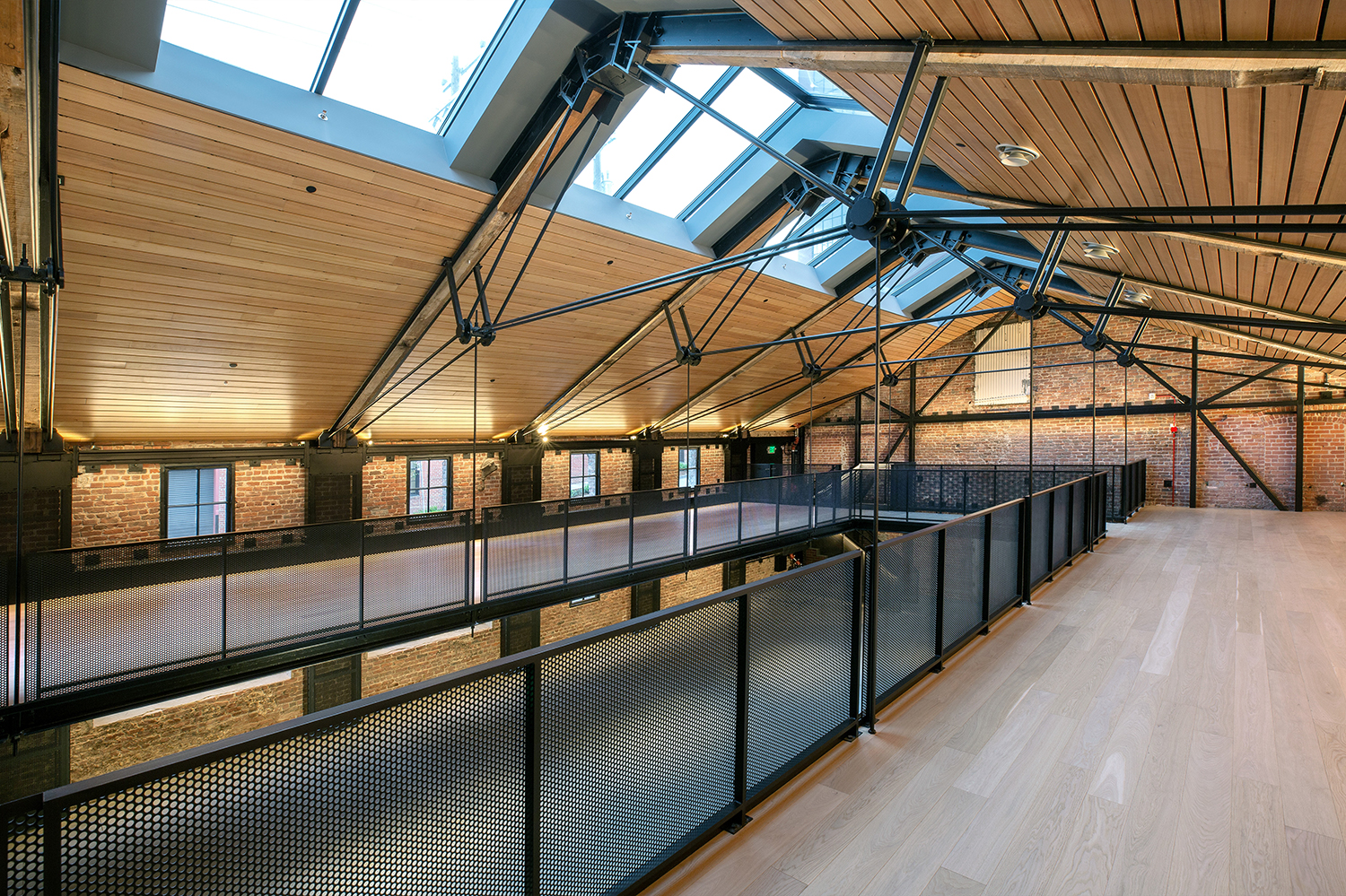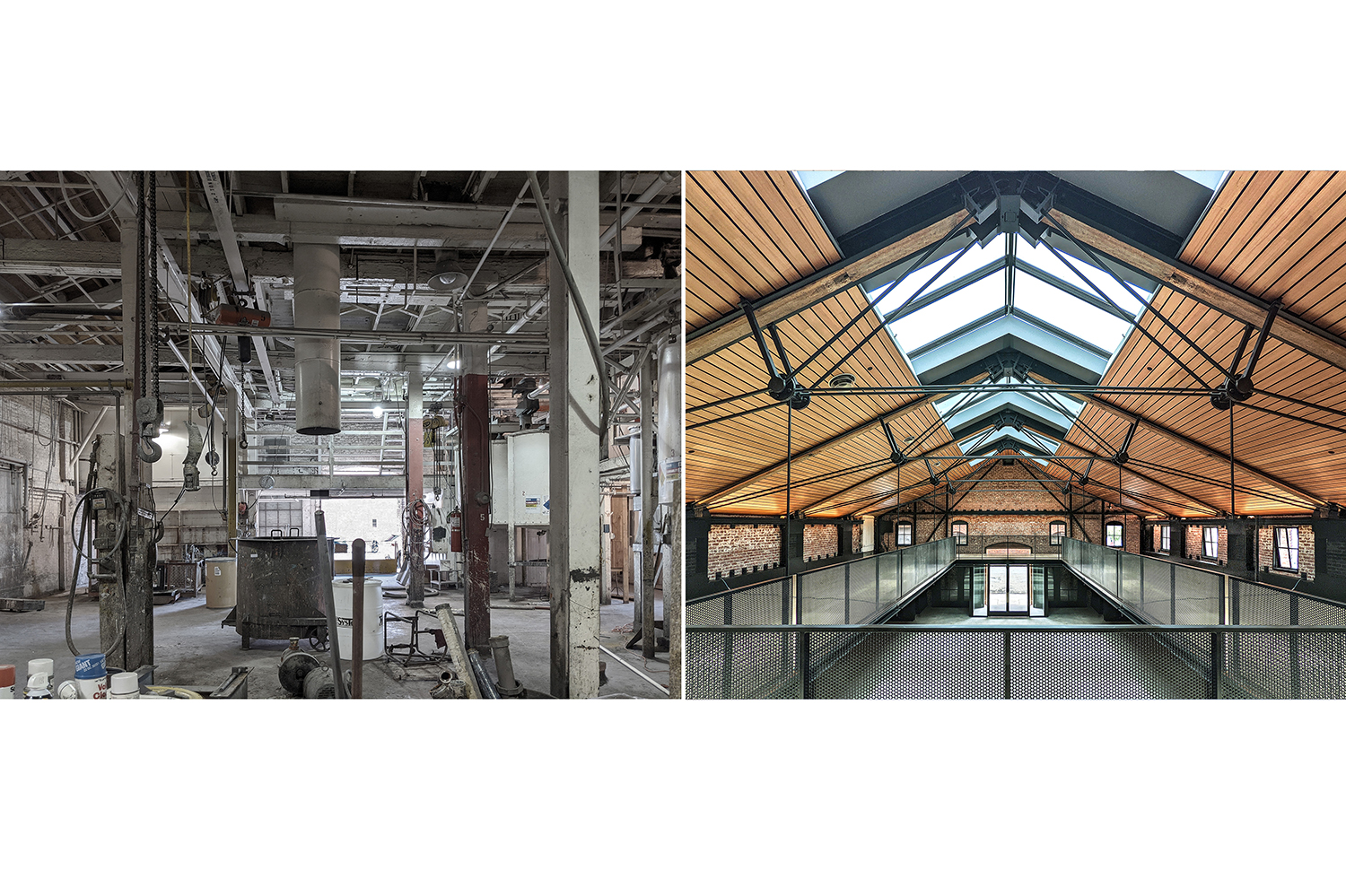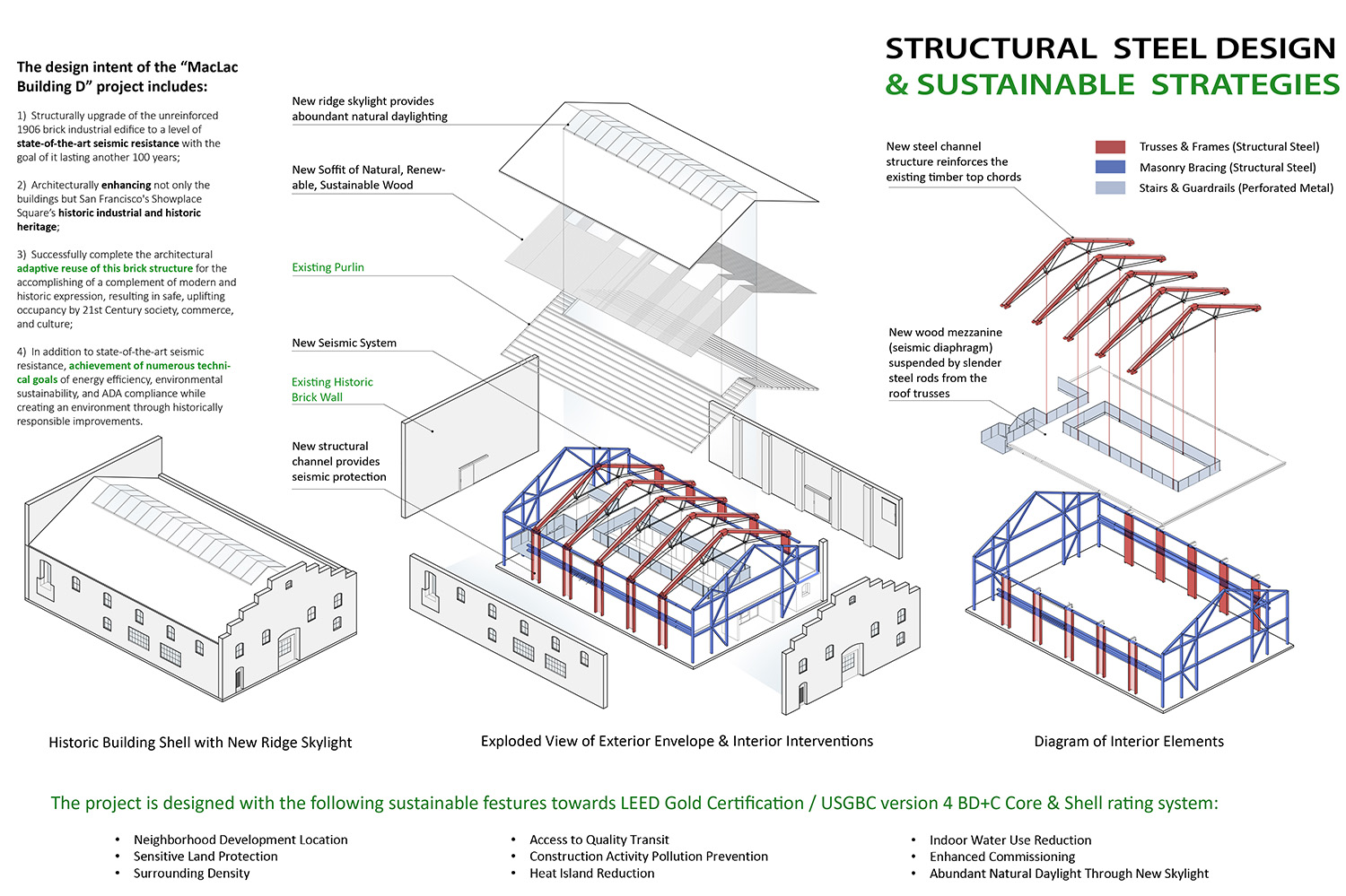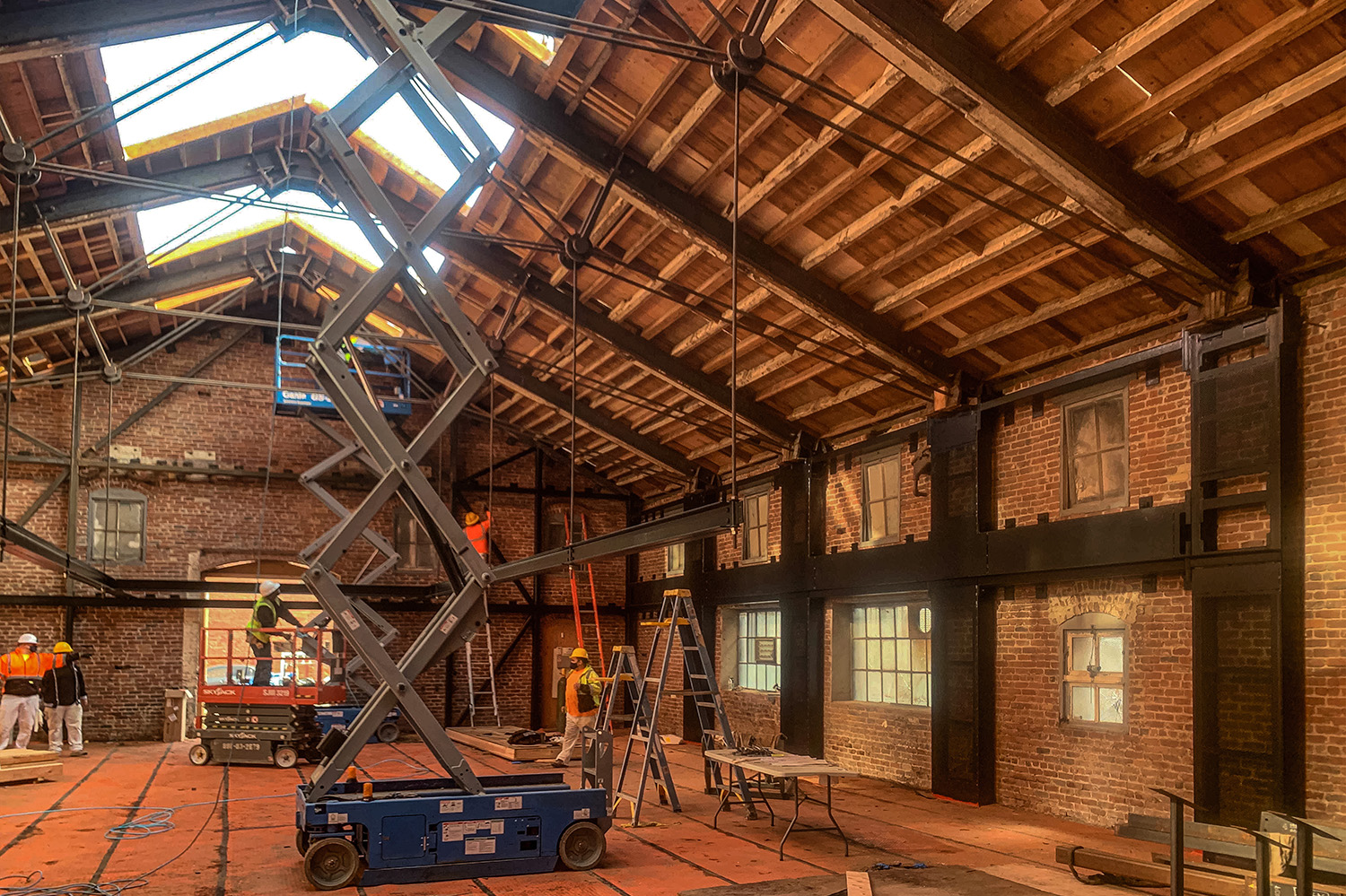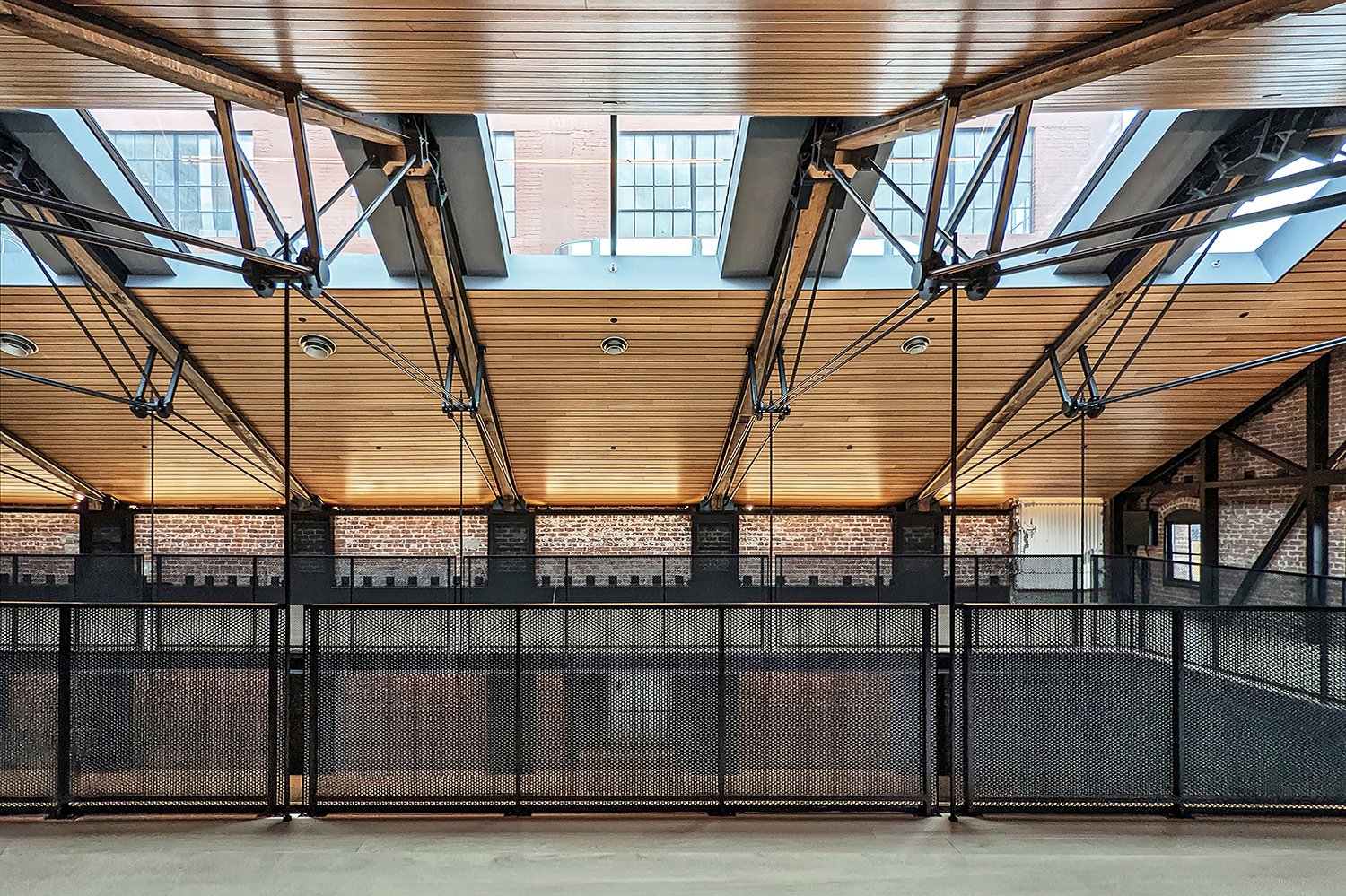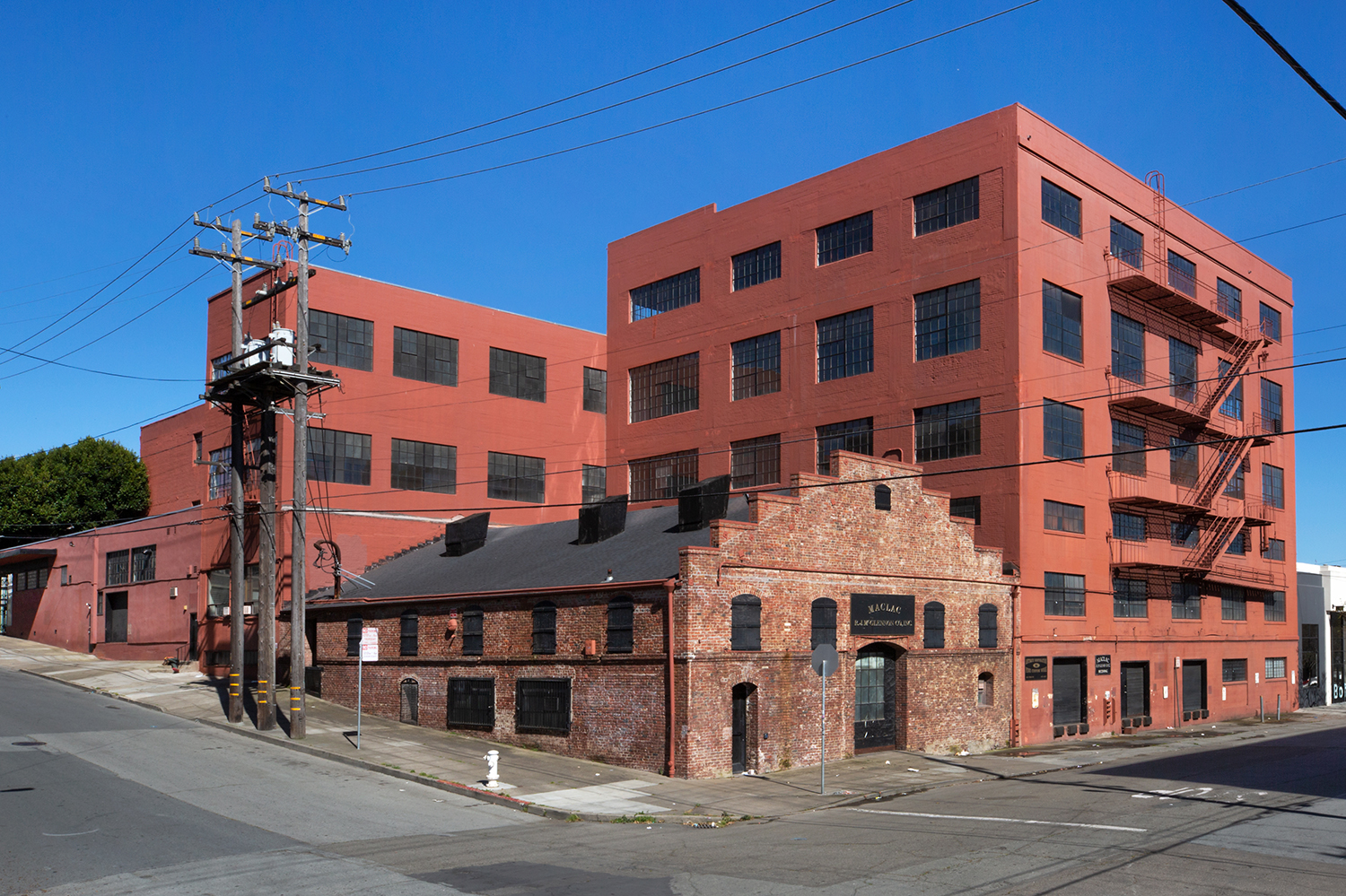AISC
MacLac Building D (Rebirth of a Historic Paint Factory)
National Award -Less than $15 million
Airy steel trusses and a new mid-height structural mezzanine add state-of-the-art seismic resistance to an unreinforced brick factory from 1906--preparing it for another century of service.
The rebirth of this historical building--with its newly unveiled, lofty interior volume made possible by the use of structural steel in the retrofit--is now ideal for functions that are in accordance with the City’s PDR (“Production Distribution and Repair”) zoning, which includes a showroom, restaurant, office, retail, light manufacturing, arts related and design-related establishments.
The classically gabled, industrial brick edifice initially functioned as part of a lacquer and paint manufacturing complex and was known as Building D. The MacLac moniker reflects the previous owner’s name (R. J. McGlennon) combined with the word lacquer.
At the outset of the project, the building’s condition was akin to a rat maze, resulting from a century-plus accretion of ad hoc partitions, random levels, obsolete industrial equipment installations, and a surfeit of detritus. The solution was to raze the maze, exposing the previously hidden, magnificent volume of the historic building and the original construction materials of brick, wood, and steel. The architectural and structural design team’s plan was to highlight these historical elements with 21st-century steel architectural and structural upgrades. The rejuvenation introduces crucial new steel seismic elements, accentuates the symmetry of the original building with an open second level whose footprint provides geometric reinforcement, introduces abundant daylight through ridge skylights extending the length of the structure, and provides architectural lighting that highlights the new structural steel architecture and elements. In addition, the original brick walls are reinforced by new steel braces and structural diaphragm elements that reduce the unsupported height of the brick walls.
Structural steel was the ideal material for this project, thanks to its high strength and ductility, providing seismic resistance crucial to the survival of the very building in a high-seismic area. Moreover, it provided the perfect solution for an industrial heritage adaptive reuse project, as it harkens to the roots of the building’s history and is a visually outstanding complement to the old brick walls and new floors.
An innovative steel king post truss system and structurally suspended cross-laminated timber (CLT) mezzanine floor structural design visually highlight the building’s geometry, original wood, and masonry while providing seismic safety and additional column-free ground floor leasable floor area. The team repurposed the top chords of the original heavy timber trusses as spacers between the steel channel top chords of the symmetrical king post trusses on each side of the existing trusses, allowing the new steel channel to encapsulate these top chords while leaving the bottom surface exposed. The system was prefabricated in two identical pairs of trusses, a center node, and two rods, which helped ease transportation and erection in the exiting building and resulted in no field welding. Once the rods joining the two sides were installed, they could be tightened to adjust the height of the ridge and assisted with aligning and leveling the old roof, and then existing web members and bottom chords of the trusses could be removed, leaving the light and elegant new trusses. The CLT floor mezzanine is suspended by hanger rods dropped down from the king post nodes on the roof trusses, leaving a column-free lower level with an open center area that allows light from a new skylight to reach the entire lower level. The “bonus” floor area of the mezzanine adds 2,555 sq. ft to the ground level area of 3,784 sq. ft, for a total interior area of 6,339 sq. ft.
The seismic-resisting system for the rejuvenated building is an ultra-stiff moment frame system consisting of deep steel columns and beams formed with hollow structural sections (HSS) acting as flanges and perforated steel plate acting as webs. This design accommodates the punched windows on the long sides of the buildings and works in tandem with stiff concentric braced frames on the gabled ends of the building. Thanks to the strength and workability of steel, a cantilevered steel landing at the mezzanine level supports a scissors stair whose only structure is the folded perforated steel plate forming the treads and risers, the perforated steel plate guard rails, and the perforated steel plate sandwich landing, all of which forms a torsionally stiff stressed-skin structure.
Judge comment: “What stood out to me on this project is how successful they were at highlighting the existing structure. The brick is beautiful now. It's 100 years old unreinforced, but it wouldn’t have been a very good lateral system for this building nowadays, especially in San Francisco. So they put it in moment frames that don't hide anything. They added a new CLT diaphragm to the floor. They reused old timbers and the trusses for the compression element in the top where you need something stocky but took advantage of steel for the tension bottomed portions of the trusses--a thin, sleek design, something you could only have done in steel that completely lets your eye pass to the historic pieces of the building that remain.” -Jim Foreman, PE, SE, senior project engineer, Martin/Martin Consulting Engineers
Owner: Comstock Realty Partners, Los Angeles
General contractor: RHC Construction, Oakland, Calif.
Consultant: Mark Hulbert Preservation Architecture, Oakland, Calif.
Architects: Marcy Wong Donn Logan Architects, Berkeley, Calif.; Peter Logan Architecture + Design/PLAD, New York
Structural engineer: Gregory P. Luth & Associates, Inc. / GPLA, Santa Clara, Calif.
- Project Category: Year 2023
- Location: San Francisco, CA
- Submitting Firm: Marcy Wong Donn Logan Architects
- Photo Credit: 1, 3, 4, 8 - Billy Hustace; 2, 5, 7 - Marcy Wong Donn Logan Architects; 6 - RHC Construction

